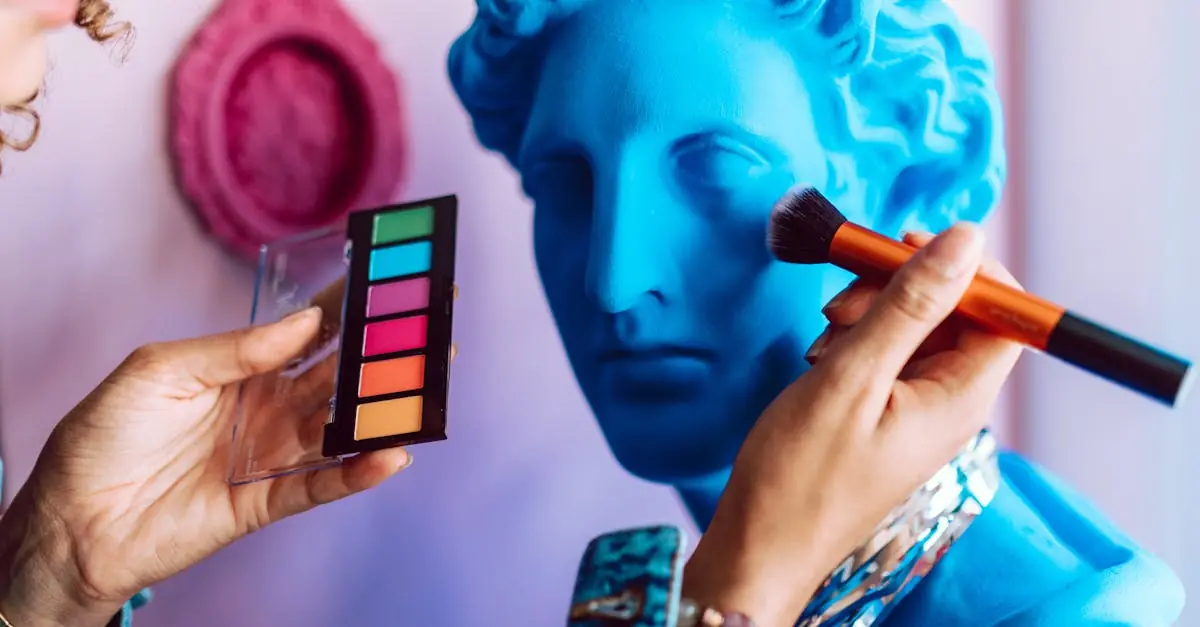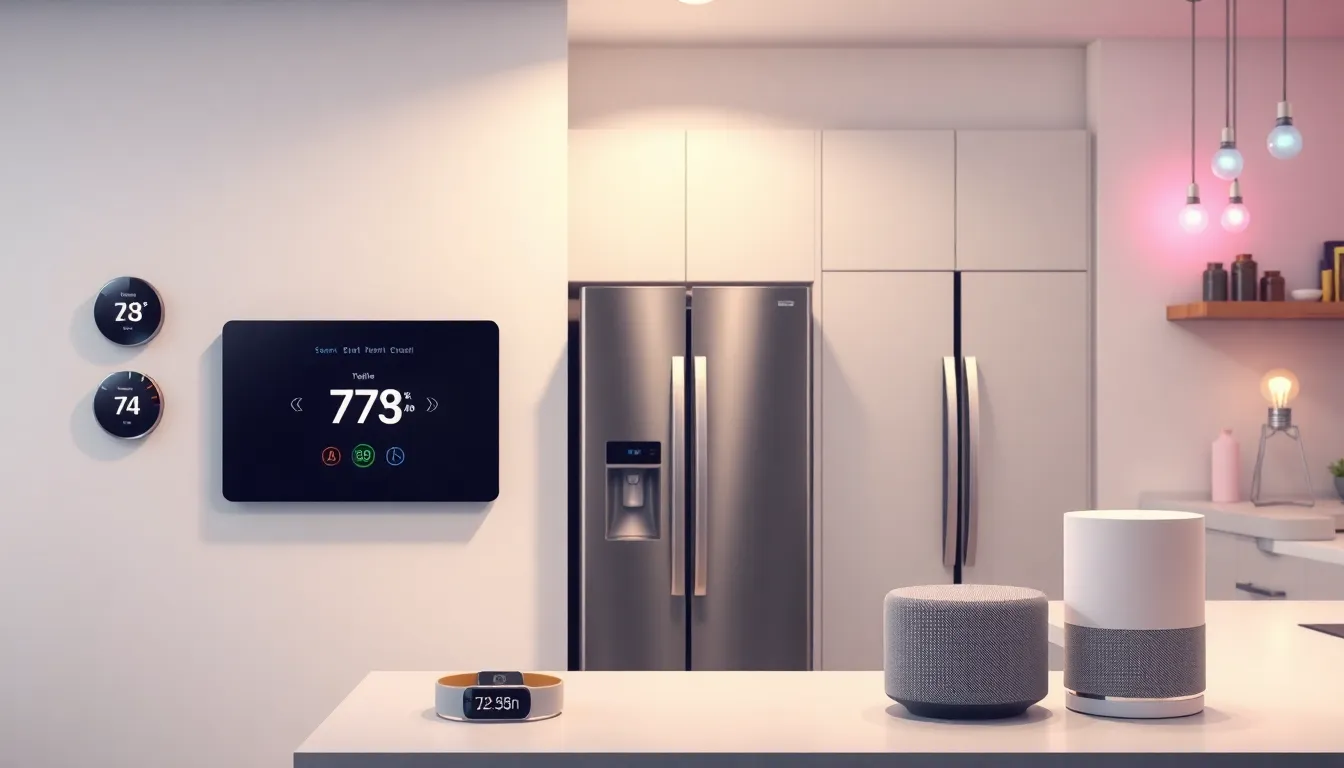Table of Contents
ToggleGen Z has officially taken the design world by storm, and they’re not holding back. With their unique blend of creativity and social consciousness, this generation is redefining aesthetics in ways that make adults scratch their heads and say, “What’s that all about?” From bold colors to nostalgic vibes, they’re crafting spaces and visuals that scream individuality and inclusivity.
Overview of Gen Z Design Trends
Gen Z focuses on distinct creativity in their design choices. This generation values individuality and inclusivity, which manifests through bold colors and unique visual elements. Nostalgic themes also play a crucial role in their aesthetic, often drawing from the past to evoke emotions and memories.
Sustainability remains a key priority in Gen Z design preferences. They prefer eco-friendly materials and practices that reflect their commitment to the environment. Whimsical patterns often appear in their work, creating dynamic interactions that engage viewers and invite exploration.
Technology integration defines Gen Z’s approach to design. Augmented reality applications and interactive elements often enhance user engagement, particularly in digital spaces. Moreover, social media influences how they curate visuals, with striking imagery tailored for platforms like Instagram and TikTok.
Inclusivity drives Gen Z to champion diversity in representation. Design trends frequently incorporate varied cultural influences, ensuring that multiple perspectives are acknowledged. Bright palettes and playful typography reflect a desire for optimism and positivity, contrasting the more muted tones often favored by previous generations.
Finally, there is a preference for personalization within the design realm. Customizable spaces and products cater to the desire for self-expression. Minimalistic designs also coexist alongside these vibrant choices, emphasizing functionality while still showcasing individuality.
Key Characteristics of Gen Z Aesthetic
Gen Z’s aesthetic revolves around vibrant expression and inclusivity, showcasing their unique perspectives through innovative designs.
Bold Color Palettes
Bright hues define the bold color palettes favored by Gen Z. They often mix unexpected shades to create eye-catching combinations. This use of color evokes emotion, attracting attention and fostering engagement. Shades of neon, pastel, and even contrasting colors appear frequently in their designs. This trend moves away from the muted tones embraced by older generations, signaling a desire for optimism. Bright colors also reflect their diverse identities, promoting individuality through visual storytelling. Gen Z gravitates toward colors that provoke thought and challenge norms, making their aesthetic dynamic and expressive.
Minimalist Designs
Minimalist designs emerge as another key characteristic of the Gen Z aesthetic. Emphasis on clean lines and spacious layouts promotes functionality without sacrificing style. They strip away the superfluous, focusing on essential elements that speak volumes through simplicity. This approach allows for personal expression in a clutter-free space. Incorporating customizable features within minimalist frameworks enhances the appeal by reflecting individuality. Minimalism serves as a backdrop for bold accents, creating a balanced yet striking visual experience. Overall, this design philosophy prioritizes both sustainability and self-expression, aligning seamlessly with their values.
Influential Platforms and Media
Generation Z actively shapes design trends through various platforms and media. Their preferences influence styles and innovative approaches across multiple channels.
Social Media Impact
Social media platforms significantly impact Gen Z’s design choices. Apps like Instagram and TikTok highlight strong visual aesthetics, often prioritizing bold colors and dynamic content. Creative posts engage users with eye-catching imagery that reflects individual expression. Influencers frequently introduce new design concepts, inspiring immediate adoption among followers. Viral challenges and trends encourage collaboration, fostering a communal approach to creativity. Each platform provides unique opportunities for showcasing emerging trends and talents.
Online Communities and Forums
Online communities and forums create spaces for Gen Z’s design discussions. Platforms such as Reddit and Discord host conversations about trends, styles, and DIY projects. Engaging in these spaces allows users to exchange ideas and critique designs. Members often share personal experiences and cultural references that enrich the design landscape. Communities centered around inclusivity promote diverse perspectives, broadening the discourse. Collaborations on these platforms lead to innovative projects that further reflect Gen Z’s values and aesthetic preferences.
Popular Design Elements Among Gen Z
Generation Z embraces design elements that resonate with their unique preferences and values. Key aspects such as typography and visual storytelling capture their vibrant and forward-thinking spirit.
Typography Choices
Bold typography makes a significant impression, frequently used to convey messages and evoke feelings. Consequently, oversized fonts dominate Gen Z designs, attracting immediate attention. Playful typefaces also play an essential role, where unconventional styles communicate individuality. Sans-serif fonts receive popularity due to their modern aesthetic and clean lines, enhancing readability across digital spaces. A mix of styles, including hand-drawn elements, further reflects their creativity, breaking traditional design rules and norms. Digital interfaces reflect these trends, where text urgency prompts engagement with impactful messaging.
Visual Storytelling
Visual storytelling harnesses images and graphics to convey narratives, allowing for deeper emotional connections. engaging visuals communicate complex ideas simply and effectively. Diverse cultures and realities are represented, promoting inclusivity and resonance with broader audiences. Vibrant colors and dynamic layouts capture attention and energize messages, fostering exploration and curiosity. Moreover, integrating multimedia elements like animations enriches storytelling, creating interactive experiences. Gen Z designers prioritize authenticity in visuals, opting for real stories reflecting genuine experiences. Such approaches ensure that design not only informs but also connects, elevating the overall aesthetic.
Case Studies of Successful Gen Z Designs
Various brands exemplify Gen Z design trends through their innovative approaches. Nike’s “Move to Zero” campaign features sustainable practices and designs that resonate with environmental consciousness. Bright colors and dynamic visuals draw attention while emphasizing eco-friendly materials.
Target also embraces the Gen Z aesthetic with its product lines. Bold graphics and playful typography appeal to younger consumers, ensuring merchandise reflects individuality. The retailer integrates inclusive designs by showcasing diverse models, which fosters a sense of community among shoppers.
In the tech realm, Apple integrates simplicity and functionality seamlessly into its products. Their web design employs minimalism and clean lines, resulting in an effective digital layout. User interaction benefits from intuitive navigation, enhancing overall engagement.
The fast-food chain Wendy’s exemplifies social media savvy with its digital marketing. Unique typography and cheeky graphics create a memorable brand identity. Fast-paced responses on Twitter capitalize on trending topics, appealing to Gen Z’s desire for authenticity.
Outdoor apparel brand Patagonia showcases commitment to sustainability. Innovative uses of recycled materials highlight environmental responsibility, while vibrant visuals attract eco-conscious consumers. Transparency in their practices resonates strongly with Gen Z values.
Lastly, Adobe captures the essence of creative expression through its promotional content. Engaging visuals and emotional storytelling reflect diverse identities, fostering connections with the audience. Their focus on user-generated content encourages self-expression and collaboration among creators.
These examples collectively illustrate how brands effectively harness Gen Z design trends. Vibrancy, inclusivity, and sustainability define successful strategies, ensuring relevance in an ever-evolving marketplace.
Generation Z’s impact on design trends is undeniable. Their unique blend of creativity and social consciousness is reshaping the aesthetic landscape. By embracing bold colors and sustainable practices, they set new standards for individuality and inclusivity in design.
As they continue to leverage technology and social media, the evolution of their style will likely inspire future generations. The emphasis on personalization and emotional storytelling resonates deeply, ensuring that design remains a powerful tool for connection.
Brands that adapt to these trends not only capture the attention of Gen Z but also align with their values, paving the way for a more vibrant and inclusive future in design.





